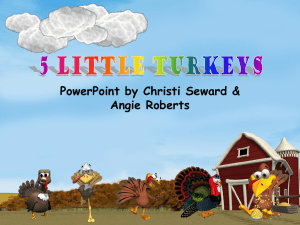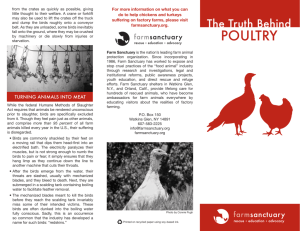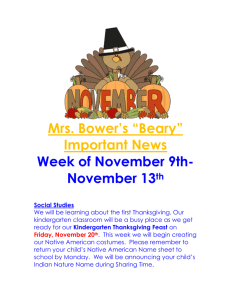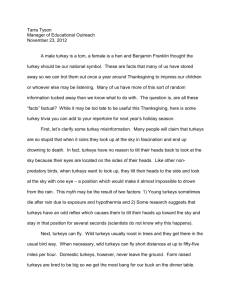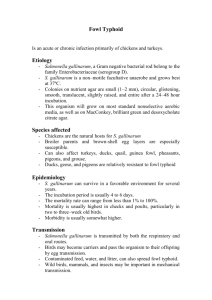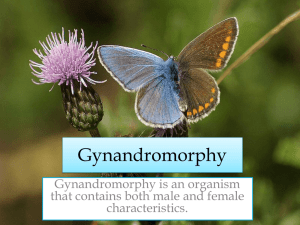Fowl Cholera (Pasteurellosis, avian hemorrhagic septicemia) Fowl
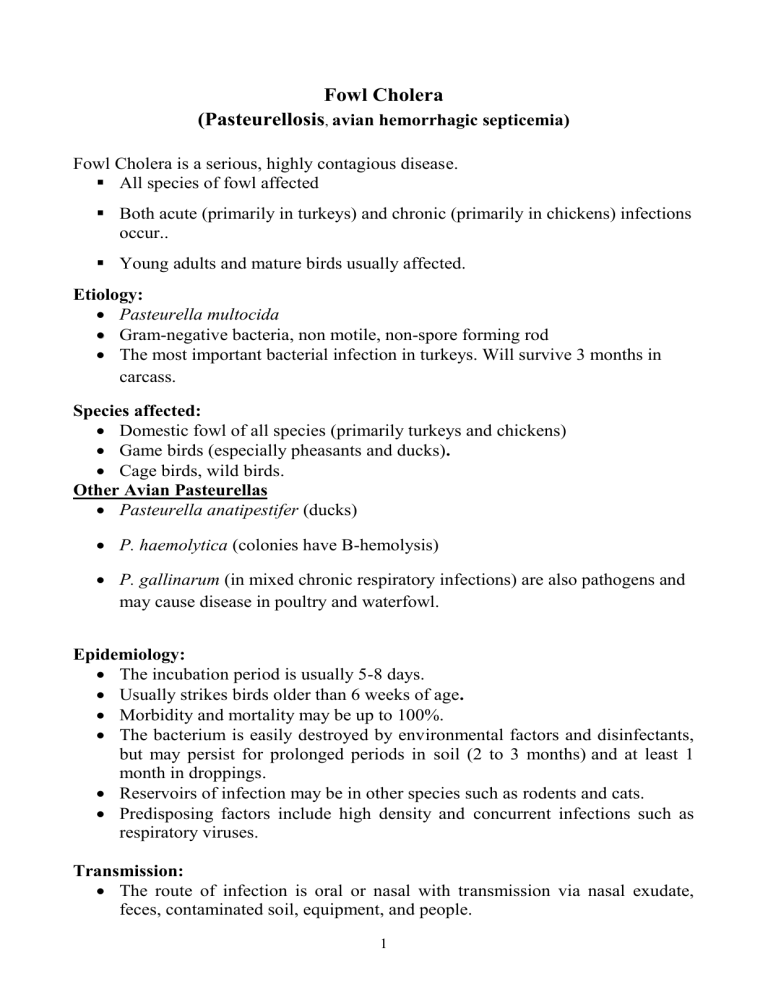
Fowl Cholera
(Pasteurellosis
, avian hemorrhagic septicemia)
Fowl Cholera is a serious, highly contagious disease.
All species of fowl affected
Both acute (primarily in turkeys) and chronic (primarily in chickens) infections occur..
Young adults and mature birds usually affected.
Etiology:
Pasteurella multocida
Gram-negative bacteria, non motile, non-spore forming rod
The most important bacterial infection in turkeys. Will survive 3 months in carcass.
Species affected:
Domestic fowl of all species (primarily turkeys and chickens)
Game birds (especially pheasants and ducks) .
Cage birds, wild birds.
Other Avian Pasteurellas
Pasteurella anatipestifer (ducks)
P. haemolytica (colonies have B-hemolysis)
P. gallinarum (in mixed chronic respiratory infections) are also pathogens and may cause disease in poultry and waterfowl.
Epidemiology:
The incubation period is usually 5-8 days.
Usually strikes birds older than 6 weeks of age .
Morbidity and mortality may be up to 100%.
The bacterium is easily destroyed by environmental factors and disinfectants, but may persist for prolonged periods in soil (2 to 3 months) and at least 1 month in droppings.
Reservoirs of infection may be in other species such as rodents and cats.
Predisposing factors include high density and concurrent infections such as respiratory viruses.
Transmission:
The route of infection is oral or nasal with transmission via nasal exudate, feces, contaminated soil, equipment, and people.
1
Free-flying birds, rodents (rats and mice).
No transmitted through the egg.
Clinical signs:
- In acute form (acute septicemia):
Sudden death may be the first sign.
Dejection and ruffled feathers.
Loss of appetite, fever.
Mucoid discharge from the mouth.
Diarrhea.
Coughing and labored breathing.
Nasal and ocular discharge.
Swollen and cyanotic wattles and face.
Lameness.
Birds lose weight.
- Chronic form ( localized pasteurellosis): not cause high mortality,
Swollen abscessed wattles.
Swollen sinuses.
Swollen joints and foot pads.
Tracheal rales and dyspnea
Torticollis resulting from meningeal infection (especially in turkey).
Post-mortem lesions:
General hyperemia (in veins of the abdominal viscera, in small vessels of the duodenal mucosa).
Petechial and ecchymotic hemorrhages (sub-serosal hemorrhages in the lung, abdominal fat and intestinal mucosa.
Enteritis.
Enlarged liver with foci of necrosis.
Purulent pneumonia (especially turkeys).
Cellulitis of face and wattles.
Caseous exudate in the sinuses around the eyes.
Purulent arthritis.
Yolk peritonitis.
Lungs with a consolidated pink 'cooked' appearance in turkeys.
- In chronic fowl cholera:
Cheesy exudates can be found between the intestines, and on liver and heart.
Yellowish caseous exudate in air spaces of the calvarial bones.
2
Diagnosis:
Signs and lesions
Isolation (aerobic culture on trypticase soy or blood agar yields colonies in 24 hours - no growth on McConkey), confirmed with biochemical tests.
Serologic method:
Rapid whole-blood agglutination.
Serum plate agglutination.
Agar diffusion tests.
ELISA has limited value in chronic cholera and no value with the acute form of the disease.
Differential diagnosis:
Erysipelas
Septicemic viral and other bacterial diseases.
Treatment:
Treat in water if possible.
Drug of choice – Sulfadimethoxine (Albon) use as directed by drug company.
Preslaughter withdrawal 5 days.
Sulfaquinoxaline is effective but toxic – withdrawal 10 days.
INJECTIONS :
Penicillin – Streptomycin combination 25 mg Dihydrostreptomycin and
500 units Procaine Penicillin G for each pound of body weight.
Prevention
If the turkeys are 12 weeks of age or less, vaccinate with live vaccine and treat in 4 or 5 days.
Birds should not be treated 72 hours previous to vaccination or for 4 days post vaccination.
Live field attenuated strain – CU strain good results in turkeys and chickens.
Vaccinate turkeys in drinking water at 6-7 weeks Then every 3-5 weeks (once a month). Make sure watering systems are free from chlorine which will inactivate the vaccine.
M-9 – attenuated CU – used in turkeys and chickens. So mild it is not recommended. Less immunity than CU but also less side effects.
3
All live vaccines must be injected in chickens (wing web route). Oral vaccines given in the water are used in turkeys.
Killed vaccine – limited success in turkeys. Inoculated I/M or S/Q at 10 weeks or older and boost from 3 to 10 weeks later.
Both aqueous and oil emulsion products available. Usually used in layer or breeder chickens.
Live vaccines give a broader spectrum of protection. Vaccinate hens with live vaccine by the wing web “stick” method. Use PM-1 or CU strain vaccine and pox inoculation needle.
* Do not vaccinate for fowl cholera unless you have a problem on the farm.
Dr. firas Hussien dept. of pathology.
4

